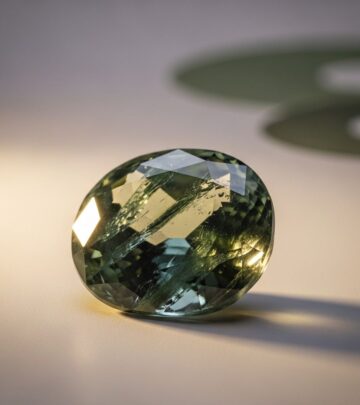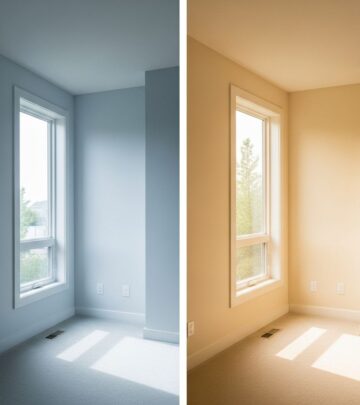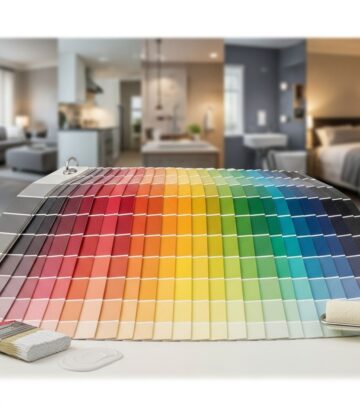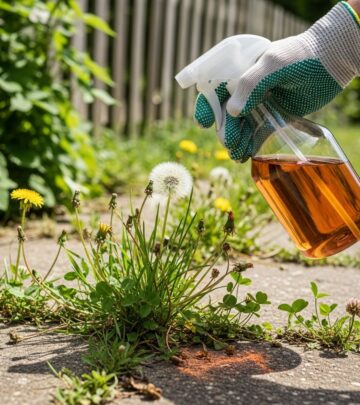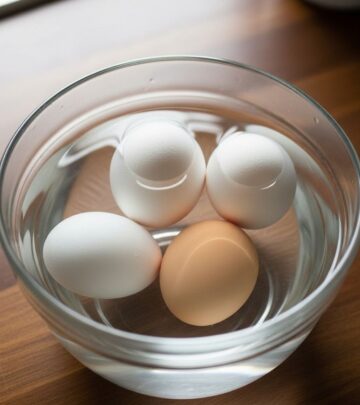Baking Soda And Hydrogen Peroxide For Cleaning: 10 Easy Hacks
Transform your cleaning routine with these powerful, non-toxic ingredients for a spotless home
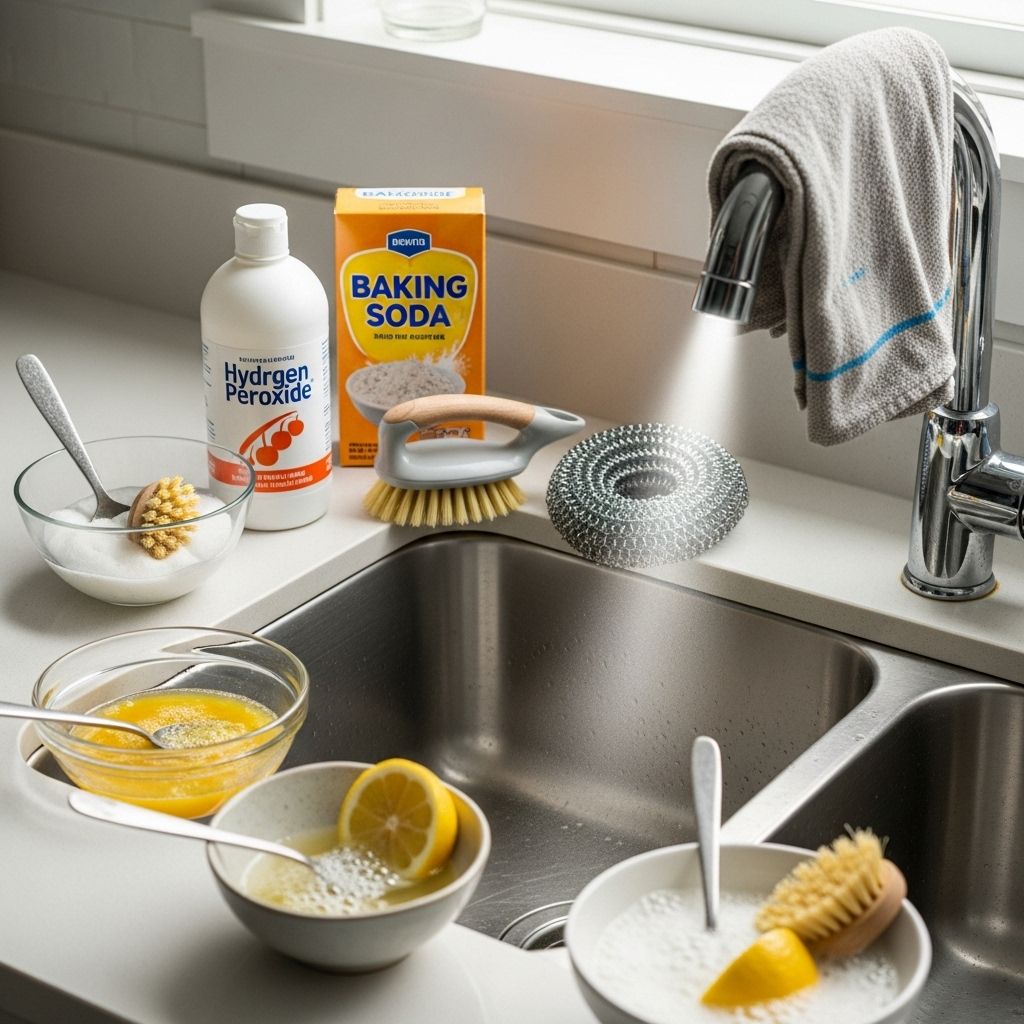
Image: HearthJunction Design Team
10 Effective Ways to Clean with Baking Soda and Hydrogen Peroxide
Cleaning your home doesn’t have to involve harsh chemicals or expensive specialized products. Two simple ingredients that you likely already have in your pantry and medicine cabinet—baking soda and hydrogen peroxide—can tackle a surprising variety of cleaning challenges effectively and economically. These natural, non-toxic products can be safely combined or used separately to clean numerous surfaces throughout your home.
Baking soda (sodium bicarbonate) works as a mild abrasive and excellent deodorizer, while hydrogen peroxide acts as a gentle bleaching and disinfecting agent. Together, they create a powerful cleaning duo that can handle everything from laundry stains to grimy bathroom surfaces. Let’s explore ten practical ways to put these versatile cleaning agents to work in your home.
Warning
While these ingredients are natural and generally safe, hydrogen peroxide can irritate eyes and skin and is toxic if ingested. Always wear protective gloves when cleaning with hydrogen peroxide. Additionally, never mix and store baking soda and hydrogen peroxide in a closed container—only combine them when you’re ready to clean for optimal effectiveness.
1. Whiten Yellowed Laundry
Over time, white clothing and linens can become dull or develop a yellowish tint. Hydrogen peroxide serves as an excellent alternative to harsh chlorine bleach for brightening these items.
Hydrogen peroxide works as a mild bleaching agent that can restore the brightness of your whites without damaging fabrics. The process is simple: add 1 cup of hydrogen peroxide to your washing machine drum or pour it into the automatic bleach dispenser before adding water and laundry.
For best results, run your washer on the hottest water setting appropriate for the fabric. The oxygen released by hydrogen peroxide helps break down stain molecules and brightens fibers without the harshness of chlorine bleach.
2. Remove Laundry Odors
Persistent odors in clothing and linens can be challenging to eliminate with regular detergent alone. Baking soda works as an effective deodorizer by neutralizing odor molecules rather than just masking them with fragrance.
For particularly stubborn odors, follow these steps:
- Dissolve 1-2 cups of baking soda in 2 cups of warm water
- Fill your washing machine tub or a large sink with cool water
- Add the dissolved baking soda solution
- Submerge the smelly laundry items and soak overnight
- Wash as usual the next day
Baking soda works by balancing the pH levels in water, which helps neutralize both acidic and alkaline odor-causing compounds. This makes it especially effective for sweaty workout clothes, musty towels, and other items with persistent smells.
3. Refresh Bathroom Grout
The grout between bathroom tiles is notorious for collecting dirt, mildew, and stains. The porous nature of grout makes it particularly challenging to keep clean. Creating a paste with baking soda and hydrogen peroxide offers an effective solution for refreshing and brightening discolored grout.
To clean bathroom grout effectively:
- Mix 3 parts baking soda with 1 part hydrogen peroxide to form a thick paste
- Apply the paste directly to the grout lines using an old toothbrush or grout brush
- Let the mixture sit for 10-15 minutes
- Scrub the grout lines with the brush
- Rinse thoroughly with clean water
The mild abrasiveness of baking soda helps remove surface grime while hydrogen peroxide kills mold and mildew spores and lightens stains. For especially stubborn grout stains, you may need to repeat the process or let the mixture sit for a longer period before scrubbing.
4. Remove Stains from Porcelain Sinks
Porcelain sinks can develop unsightly stains from hard water, food residue, or rust. The combination of baking soda and hydrogen peroxide creates an effective cleaning paste that can restore the bright white appearance of porcelain fixtures without scratching the surface.
To remove stains from porcelain sinks:
- Sprinkle baking soda liberally over the stained areas of the sink
- Spray hydrogen peroxide directly onto the baking soda
- Let the mixture bubble and work for 10-15 minutes
- Scrub gently with a soft sponge or cloth
- Rinse thoroughly with water
This method is particularly effective for coffee and tea stains, rust marks, and general discoloration that can make porcelain fixtures look aged and dingy. The gentle chemical reaction between the two ingredients helps lift stains without damaging the porcelain’s finish.
5. Clean Bathroom Fixtures
Bathroom fixtures like faucets, shower heads, and handles can accumulate soap scum, water spots, and grime over time. A simple mixture of baking soda and hydrogen peroxide can help restore their shine without the need for commercial cleaners.
For sparkling bathroom fixtures:
- Create a paste using equal parts baking soda and hydrogen peroxide
- Apply the paste to fixtures with a soft cloth or sponge
- Allow it to sit for 5-10 minutes
- Gently scrub if needed
- Rinse thoroughly and buff dry with a clean cloth
This cleaning method is gentle enough for most fixture finishes, including chrome, stainless steel, and brushed nickel. For brass or copper fixtures, test in an inconspicuous area first, as hydrogen peroxide may cause discoloration on these materials.
6. Sanitize Cutting Boards
Cutting boards, especially wooden ones, can harbor bacteria in their scratches and grooves. Hydrogen peroxide’s disinfectant properties make it ideal for sanitizing these kitchen workhorses, while baking soda helps with stain removal and deodorizing.
To thoroughly clean and sanitize cutting boards:
- Sprinkle baking soda generously over the cutting board surface
- Spray hydrogen peroxide over the baking soda
- Allow the mixture to foam and bubble for 5 minutes
- Scrub the surface with a brush or sponge, paying special attention to cuts and grooves
- Rinse thoroughly with clean water
- Allow the cutting board to air dry completely
This method works for both wooden and plastic cutting boards. For wooden boards, finish by applying a thin layer of food-grade mineral oil after the board is completely dry to help prevent cracking and maintain the wood’s condition.
7. Unclog Drains
Slow-draining sinks are a common household annoyance, often caused by buildup of soap residue, hair, and other organic materials. Before reaching for harsh chemical drain cleaners, try this gentler approach using baking soda and hydrogen peroxide.
To clear minor drain clogs:
- Pour 1/2 cup of baking soda directly into the drain
- Follow with 1 cup of hydrogen peroxide
- The mixture will fizz and bubble as it works to break down the clog
- Let it work for 15-30 minutes
- Flush with hot water
This method is most effective for minor clogs and slow drains rather than completely blocked pipes. The bubbling action helps loosen debris while the baking soda helps neutralize odors. For best results, perform this cleaning regularly as preventative maintenance.
8. Clean Shower Curtains
Shower curtains and liners are notorious for developing mildew and soap scum. Instead of replacing them frequently, give them new life with this baking soda and hydrogen peroxide cleaning method.
To refresh shower curtains:
- Remove the shower curtain or liner from the rod
- Place it in the washing machine with a couple of bath towels (the towels provide gentle scrubbing action)
- Add 1/2 cup of baking soda to the detergent compartment
- Add 1 cup of hydrogen peroxide to the bleach dispenser
- Wash on a gentle cycle with warm water
- Hang immediately to dry
This cleaning method is effective for both fabric and plastic shower curtains. The combination helps remove mildew stains and soap residue while the towels provide gentle agitation to assist in the cleaning process without damaging the curtain.
9. Remove Stains from Mugs and Teapots
Coffee and tea can leave stubborn brown stains on ceramic mugs, teapots, and other dishware over time. These stains are notoriously difficult to remove with regular dish soap but respond well to the combination of baking soda and hydrogen peroxide.
To remove beverage stains from mugs and teapots:
- Sprinkle a generous amount of baking soda into the stained container
- Add enough hydrogen peroxide to form a paste
- Use a sponge or cloth to spread the mixture over all stained areas
- Let sit for 30 minutes to several hours, depending on the severity of stains
- Scrub gently if needed
- Rinse thoroughly and wash as usual
For particularly stubborn stains, you can prepare the paste and leave it overnight. The longer contact time allows the hydrogen peroxide to break down the tannins that cause the discoloration while the mild abrasiveness of baking soda helps lift the loosened stains.
10. Clean and Deodorize Mattresses
Mattresses can harbor dust mites, sweat, and other allergens that accumulate over time. While you can’t throw your mattress in the washing machine, you can freshen and clean it with baking soda and hydrogen peroxide.
To clean and deodorize a mattress:
- Strip all bedding and vacuum the mattress thoroughly
- Mix 1 cup of hydrogen peroxide with 2 tablespoons of baking soda and a few drops of liquid dish soap
- Pour the mixture into a spray bottle
- Lightly spray any stained areas (don’t saturate)
- Allow to air dry completely
- Once dry, sprinkle the entire mattress with baking soda and let sit for several hours
- Vacuum thoroughly to remove the baking soda
This method helps eliminate odors and surface stains while the baking soda helps draw out moisture and freshen the mattress. Always ensure your mattress dries completely before remaking the bed to prevent mold growth.
Frequently Asked Questions (FAQs)
Can I pre-mix baking soda and hydrogen peroxide for future use?
No, you should not pre-mix and store these ingredients together in a closed container. Hydrogen peroxide breaks down into water and oxygen, and in a sealed container, this can cause pressure buildup and potentially rupture the container. Always mix them fresh when you’re ready to clean.
Is this cleaning combination safe for all surfaces?
While generally safe for many surfaces, you should avoid using hydrogen peroxide on some materials. It can damage natural stone surfaces like marble and granite, and it may discolor or damage certain finishes on metals like brass or copper. Always test in an inconspicuous area first.
What concentration of hydrogen peroxide should I use for cleaning?
For household cleaning purposes, the standard 3% hydrogen peroxide solution available at drugstores is appropriate and effective. Stronger concentrations are not recommended for home use as they can be hazardous.
Can I use this mixture to clean colored fabrics?
Hydrogen peroxide has mild bleaching properties, so it’s best to avoid using it on colored fabrics or surfaces where color preservation is important. Always test in an inconspicuous area first if you’re unsure.
How long does hydrogen peroxide remain effective after opening?
Hydrogen peroxide gradually loses its effectiveness once opened as it breaks down into water and oxygen. For best results, use an opened bottle within six months and store it in a dark bottle away from light, which accelerates decomposition.
By incorporating these simple yet effective cleaning methods into your routine, you can maintain a cleaner, fresher home while reducing your reliance on commercial cleaning products that often contain harsh chemicals. Baking soda and hydrogen peroxide offer an economical, environmentally friendly alternative that proves that sometimes the simplest solutions are the most effective.
References
- https://www.earthsharenj.org/10-ways-to-use-baking-soda-and-hydrogen-peroxide-to-clean-your-home/
- https://www.treehugger.com/cleaning-with-baking-soda-5194039
- https://cleanzen.com/blog/clean-with-baking-soda-and-hydrogen-peroxide/
- https://www.thespruce.com/baking-soda-and-hydrogen-peroxide-cleaning-7507790
Read full bio of medha deb

